1,4-Dioxane: Science, Characterization & Analysis, and Remediation Training
Live Webinar: Tuesday, September 16, 2025, 1:00PM-3:15PM EDT (17:00-19:15 GMT)
Sponsored by: Interstate Technology and Regulatory Council
In 2020, ITRC's 1,4-Dioxane team created multiple tools and documents that provide information to assist all interested stakeholders in understanding this contaminant and for making informed, educated decisions. Since the 1950s, 1,4-Dioxane has seen widespread use as a solvent stabilizer. The use of solvents through the 1980s suggests its presence at thousands of solvent sites in the US; however, it is not always a standard compound in typical analytical suites for hazardous waste sites, so it previously was overlooked. The U.S. EPA has classified 1,4-Dioxane as "likely to be carcinogenic to humans." Some states have devised health standards or regulatory guidelines for drinking water and groundwater standards; these are often sub-part per billion values. These low standards present challenges for analysis, characterization, and remediation of 1,4-Dioxane.
The 1,4-Dioxane: Science, Characterization & Analysis, and Remediation training is a series of six (6) modules. The six individual modules will be presented together live, and then archived on the ITRC 1,4-Dioxane training webpage for on demand listening.
The modular 1,4-Dioxane training series provides an overview of 1,4-Dioxane and presenting six sections from the ITRC guidance document (1,4d-1, 2021):
- History of Use and Potential Sources (Sect 1)
- Regulatory Framework (Sect 2)
- Fate and Transport (Sect 3)
- Sampling and Analysis (Sect 4)
- Toxicity and Risk Assessment (Sect 5)
- Remediation and Treatment Technologies (Sect 6)
- The history of 1,4-Dioxane manufacturing and usage and the potential sources of releases of 1,4-Dioxane to the environment.
- Primary state and U.S. federal regulatory programs of relevance to 1,4-Dioxane
- Key physical/chemical properties, and fate and transport processes that are relevant for 1,4-Dioxane
- Benefits and limitations of the available analytical methods
- Risk drivers for human health and how ecological risk compares
- How/when/why different treatment technologies are appropriate
For regulators and other government agency staff, this understanding of 1,4-Dioxane can be incorporated into your own programs. This training summarizes the current understanding of 1,4-Dioxane. While the training makes every effort to keep the information accessible to a wide audience, it is assumed that the participants will have some basic technical understanding of chemistry, environmental sciences, and risk assessment. As with other emerging contaminants, our understanding of 1,4-Dioxane continues to advance. This training provides the participants with information on areas where the science is evolving and where uncertainty persists.
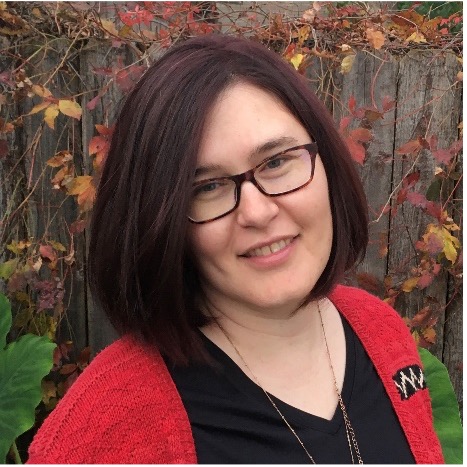 Lauren Larkin, Minnesota Pollution Control Agency (lauren.larkin@state.mn.us)
Lauren Larkin, Minnesota Pollution Control Agency (lauren.larkin@state.mn.us)
Lauren is a hydrogeologist for the Minnesota Pollution Control Agency where she has worked on closed landfills and as part of the Superfund program. Prior to her time at the agency, she worked in environmental consulting. She has a B.S. in physics with a minor in geology from the College of William and Mary, and a M.S. in geophysics from the University of Minnesota.
 Janet Anderson, Ph.D., DABT, GSI Environmental Inc. (jkanderson@gsi-net.com)
Janet Anderson, Ph.D., DABT, GSI Environmental Inc. (jkanderson@gsi-net.com)
Regulatory Framework & Toxicology and Risk Assessment
Dr. Janet Anderson is a Principal Toxicologist with GSI Environmental Inc. with 15 years of experience providing toxicology and risk management strategies to federal agencies, private industry, and municipal clients. She also provides litigation consulting and expert services and is a Diplomate of the American Board of Toxicology. Dr. Anderson specializes in communicating the key findings from toxicology studies used to inform state and federal regulatory policy and public health decisions, and helping stakeholders understand the sometimes-disparate interpretations. She is a recognized leader in unregulated and emerging chemicals, such as per- and polyfluoroalkyl substances (PFAS), 1,4-dioxane, and 1,2,3-trichloropropane. She has developed strategies to mitigate human health risks and address environmental liability associated with unregulated and emerging chemicals for both private and public sector clients. She has extensive experience developing risk communication and risk management strategies for multi-stakeholder groups. Dr. Anderson received her Ph.D. in Molecular and Cancer Biology from the University of Cincinnati, completed a post-doctoral fellowship with the U.S. Environmental Protection Agency, and as a civilian government employee, led the U.S. Air Forces Emerging Contaminants program and advised the Department of Defense on matters related to toxicology and environmental restoration. A skilled communicator, Dr. Anderson is often an invited speaker and panelist at high-level scientific conferences, regulatory and industry meetings, law seminars, technical webinars and workshops, and community stakeholder meetings.
 David T. Adamson, Ph.D, P.E., GSI Environmental Inc. (dtadamson@gsienv.com)
David T. Adamson, Ph.D, P.E., GSI Environmental Inc. (dtadamson@gsienv.com)
Environmental Fate, Transport and Investigation Strategies
Dr. David Adamson is a Principal Engineer at GSI Environmental Inc. in Houston, Texas with more than 20 years of environmental project experience in academic research and environmental consulting. He has extensive expertise in projects dealing with natural attenuation, high-resolution site characterization, emerging contaminants, matrix diffusion, and the development and testing of innovative monitoring and remediation technologies. He has served as a Principal Investigator or co-Principal Investigator on several DoD-sponsored research projects, including those focused on PFAS and 1,4-dioxane treatment and fate and transport. He is an active member of both the PFAS team and the 1,4-Dioxane team for ITRC, serving as the co-lead of the Training Group for the 1,4-Dioxane team as well as a contributing author for both team's guidance documents. He is a licensed Professional Engineer in Texas and serves as a Lecturer at Rice University in the Civil and Environmental Engineering Department.
 Monica Heintz, Arcadis (monica.heintz@arcadis.com)
Monica Heintz, Arcadis (monica.heintz@arcadis.com)
Environmental Fate, Transport and Investigation Strategies
Dr. Monica Heintz is a Principal Geoscientist at Arcadis U.S., Inc. in Denver, Colorado. She has more than 15 years of experience in academic research and environmental consulting. Dr. Heintz works at the nexus of groundwater hydrogeology, geochemistry, and microbiology. She has extensive project experience developing and refining conceptual site models and designing, implementing, and evaluating monitored natural attenuation programs for a variety of constituents and in a variety of environmental contexts. Dr. Heintz is a subject matter expert in microbial biodegradation and environmental molecular diagnostic tools.
 Elizabeth Denly (edenly@trccompanies.com)
Elizabeth Denly (edenly@trccompanies.com)
Elizabeth Denly is based out of Lowell, Massachusetts and is a Technical Director at TRC and the Program Director for TRC's PFAS Group. She is a chemist with 30 years of consulting experience encompassing field and laboratory analyses and audits, quality assurance/quality control, data validation, and consulting for regulatory agencies. Elizabeth is currently focusing on PFAS, specifically the nomenclature, chemistry, sampling procedures, QA/QC, and laboratory analytical methodologies, and has a significant role in educating clients, attorneys, and regulators about PFAS. She has been a leader in ITRC's PFAS Team and received the ITRC's Industry Member of the Year Award in 2017 for her work on this team. Elizabeth earned a bachelor's degree in chemistry from the University of New Hampshire in 1987 and is also a certified manager of quality/organizational excellence (CMQ/OE) by the American Society of Quality.
 Charles Neslund, Eurofins (charlesneslund@eurofinsus.com)
Charles Neslund, Eurofins (charlesneslund@eurofinsus.com)
Sampling and Analysis
Charles (Chuck) Neslund is the Scientific Officer for Eurofins Lancaster Laboratories Environmental, LLC. And PFAS Practice Leader for Eurofins Environment Testing US. Chuck has worked in environmental analytical chemistry for over 36 years and works out of the Lancaster, PA location. He is a subject matter expert in HRMS analysis and PFAS analysis. He is responsible for identifying and framing trends in analytical testing and equipment. Chuck initiates new methodology and directs research and development. He has a B.S. in Chemistry from the University of Pittsburgh (1982) and two years of graduate study credits in Organic Chemistry from the University of Pittsburgh (1982-1984). He is a member of the American Chemical Society (ACS), Chromatography Forum of Delaware Valley (CFDV), Air & Waste Management Association (AWMA), Society of Environmental Toxicology and Chemistry (SETAC), and Sediment Management Workgroup (SMWG).
 Barrie Selcoe, Jacobs (barrie.selcoe@jacobs.com)
Barrie Selcoe, Jacobs (barrie.selcoe@jacobs.com)
Toxicology and Risk Assessment
Barrie Selcoe is a Principal Technologist with Jacobs in Houston, Texas. Barrie has worked at Jacobs since 2018, specializing in human health risk assessment. She is responsible for planning and overseeing human health risk-based activities at hazardous waste sites across the U.S. and internationally. She utilizes numerous federal (USEPA and Department of Defense) and state guidance documents in risk assessment projects, and is involved in all stages of site planning, investigation and reporting, cleanup level identification, and remedial action planning. She has been involved in risk assessments in 40 states and about 20 countries. She has worked on risk assessments incorporating incremental sampling and site-specific bioaccessibility studies. She has provided risk assessment services for numerous Comprehensive Environmental Response, Compensation, and Liability Act (CERCLA)/Superfund sites, Resource Conservation and Recovery Act (RCRA) facilities, state-program sites, voluntary actions, and international projects. She has prepared risk assessments for various types of sites, including industrial and commercial facilities, industrial and municipal landfills, bulk fuel terminals, rivers, U.S. Department of Defense facilities, and residential areas. Prior to Jacobs (which purchased CH2M in 2018), she worked as a human health risk assessor for 19 years with CH2M, 7 years with Philip Environmental, and 3 years with O'Brien & Gere Engineers. Since 2012, Barrie has contributed as a team member on ITRC's Risk Assessment team, Bioavailability in Contaminated Soil team, TPH Risk Evaluation at Petroleum-Contaminated Sites team, and PFAS team. She earned a bachelor's degree in microbiology from San Diego State University in San Diego, California in 1986, and a Master's of Public Health from the University of Pittsburgh Graduate School of Public Health in Pittsburgh, Pennsylvania in 1999.
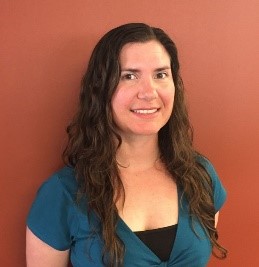 Caitlin Bell, PE, Arcadis U.S., Inc. (caitlin.bell@arcadis.com)
Caitlin Bell, PE, Arcadis U.S., Inc. (caitlin.bell@arcadis.com)
Remediation and Treatment Technologies
Caitlin Bell, PE is based out of Seattle, Washington and is a Technical Expert and 1,4-Dioxane Lead for Arcadis North America. She is a chemical and environmental engineer with more than a decade of experience in environmental remediation and compliance. Ms. Bell focuses on treatment of soil and groundwater using ex situ and in situ techniques. Specifically, she focuses on in situ bioremediation applications for a variety of chemicals of concern, including emerging contaminants. She serves as a technical resource on topics such as molecular biology tools, bioaugmentation, and compound specific isotope analysis. Ms. Bell was a member of the ITRC Environmental Molecular Diagnostics team and is the lead author of the 2019 Emerging Contaminants Handbook.
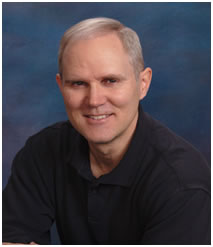 Ted Tyler, Cardno now Stantec (ted.tyler@cardno-gs.com)
Ted Tyler, Cardno now Stantec (ted.tyler@cardno-gs.com)
Remediation and Treatment Technologies
Ted Tyler has 28 years of experience as a project manager and engineer providing soil, groundwater, wastewater, and air quality assessment, treatment design, permitting, construction management, and operations and maintenance services. His work has entailed sites impacted by chlorinated solvents (e.g., PCE, TCE, CT, TCA, etc.); 1,4-dioxane, PFAS, gasoline, diesel and jet fuels; perchlorate; dioxins/furans; pesticides and herbicides, metals (e.g., Cr(VI)., arsenic, etc.). He is experienced in selecting and implementing the right solution for contaminated sites including the use of physical, biological, and chemical treatment technologies, and holds a U.S. Patent for an in situ bioremediation process (No. 8,580,114). He has developed column, bench, and field pilot studies to further evaluated treatment technologies prior to implementation. Mr. Tyler is a long-term member of the Interstate Technology and Regulatory Council (ITRC) and is a frequent presenter/author regarding assessment and treatment technologies at conferences such as Battelle.
 Fritz Krembs, TriHydro (fkrembs@trihydro.com)
Fritz Krembs, TriHydro (fkrembs@trihydro.com)
Remediation and Treatment Technologies
Fritz Krembs, PE, PG is an environmental engineer based out of Trihydro Corporation's Golden, Colorado office. He has over 17 years of experience working in environmental remediation. He has extensive experience with in-situ chemical oxidation (ISCO), in-situ bioremediation (ISB), monitored natural attenuation, phytoremediation, and other technologies. He is Trihydro's Subject Matter Expert on 1,4-dioxane. He has led technical trainings on 1,4-dioxane, ISCO, ISB, and phytoremediation for government and private clients. He is a graduate of Colorado School of Mines and serves as a guest lecturer for their graduate level in-situ remediation course.
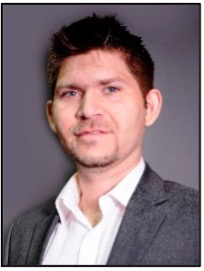 Francisco Barajas, AECOM (Francisco.Barajas@aecom.com)
Francisco Barajas, AECOM (Francisco.Barajas@aecom.com)
Remediation and Treatment Technologies
Francisco Barajas is based out of Omaha, Nebraska and is an Environmental Engineer and Treatability Subject Matter Expert at AECOM. He has four years of experience in environmental consulting and over 10 years of experience conducting bench-scale laboratory tests for treatment of contaminants, including emerging contaminants such as 1,4-dioxane and PFAS, in groundwater, soil, and wastewater. He has been a member of the ITRC's 1,4-Dioxane Team for two years. Francisco earned a bachelor's degree in chemical engineering from the University of Sonora (Mexico). He also holds a doctorate degree in environmental engineering from Clemson University where he researched bioremediation approaches for 1,4-dioxane including aerobic metabolism and cometabolism.
Moderator:
ITRC Training Program (itrc@itrcweb.org)
- These materials will be available by Tuesday, September 16, 2025
Webinar Slides and References:
- These materials will be available by Tuesday, September 16, 2025
Additional Resources:
Thank you for participating in our webinar. We would like to receive any feedback you might have that would make this service more valuable.
Help & FAQs
- Frequently Asked Questions
- Content Questions?
Call the ITRC Training Program at 202-266-4932 or itrc@itrcweb.org - Technical Problems?
Leave us a comment - Cancel Your Registration
- My Participation Records
- CEU Credits and PDHs
Zoom Resources
Before Webinar Day
This seminar will be delivered through Zoom. Participants are encouraged to update to the latest version of the Zoom application for the best experience.
If you are unable to install the Zoom application, most functions will be available if you join just using a modern web browser such as Chrome, Edge or Firefox. We strongly encourage you to run the Zoom Meeting Test prior to attending this webinar. Technical support on the day of the webinar will be very limited and subject to significant delays.
Backup Conference Call
If you cannot participate using online audio, you may join the optional call in line. After checking in for the live event using the instructions listed below, you will see several options to participate. Please click the links in option 4 to follow along by phone and obtain the call in number. If you cannot access the phone number, you may request the call in line from the event moderator in the Q&A or send an email to Jean Balent at balent.jean@epa.gov
Click on "Join Webinar" at the top of this screen, enter your exact first and last name as you registered and enter the number of people attending at your location (including yourself). You should then be taken to the Zoom meeting room. Join with Zoom Application: For those joining with the Zoom application, you may be prompted to sign with a zoom account or join as a guest without signing in.
If joining as a guest, you will be prompted to enter your name and email address. Remember your name, image, video or voice may be visible to others in the live event. When done, click "Join" When it is time for the live event to start, the meeting host will admit you to the live Zoom meeting. Join via web browser (without the Zoom Application): For those joining with a web browser, you may close any pop ups prompting you to download the Zoom app. The next window will allow you to enter your name (first name and last name) and check the box that you are not a robot. Click the blue join button. You may also be asked to provide your email address before joining the room. Remember your name, image, video or voice may be visible to others in the live event. When done, click "Join" When it is time for the live event to start, the meeting host will admit you to the live Zoom meeting. You may need to periodically refresh the browser window to confirm if the host has admitted you. The presenters will control what slide you are viewing. You may submit questions online for the instructors to answer during the webinar by typing in the "Q&A" area. It is not necessary to wait until the question and answer periods to submit questions. At the end of the webinar you will be guided to our feedback form and links to additional resources, including the complete presentation. These links will remain active after the webinar. Provided for your convenience. Importing or accepting the invitation within this iCalendar file is not required, and declining the invitation does not cancel your registration. For additional information on iCalendar, please see our
iCalendar Help It is EPA's policy to make reasonable accommodation to persons with disabilities wishing to participate in the agency's programs and activities, pursuant to the Rehabilitation Act of 1973, 29 U.S.C. 791. Any request for accommodation should be made to the ITRC Training Program at 202-266-4932 or itrc@itrcweb.org, preferably one week or more in advance of the seminar, so that EPA will have sufficient time to process the request. EPA would welcome specific recommendations from requestors specifying the nature or type of accommodation needed. EPA welcomes specific recommendations from requestors specifying the nature or type of accommodation needed. Please note that CLU-IN provides both alternate phone call-in options and closed captioning for all webinars, and requests for these specific accommodations are not necessary.
Webinar Day, Checking In

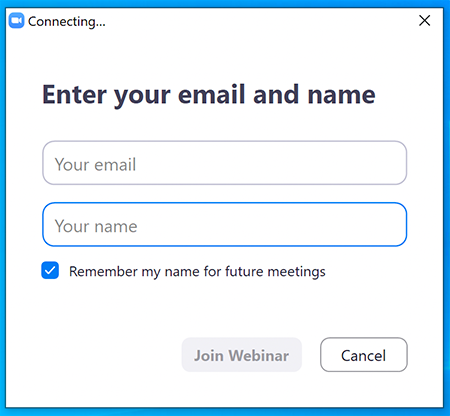
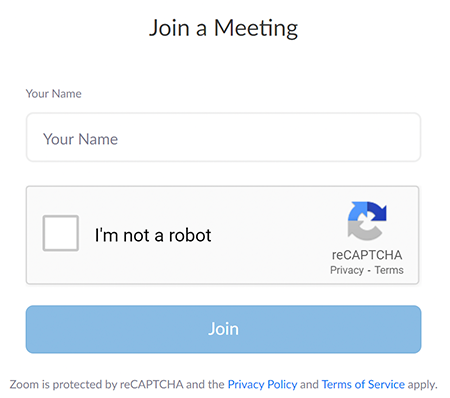
Moving Through Slides
Feedback & Links to Additional Resources
iCalendar File
Rehabilitation Act Notice for Reasonable Accommodation
Rehabilitation Act Notice for Reasonable Accommodation
It is EPA's policy to make reasonable accommodation to persons with disabilities wishing to participate in the agency's programs and activities, pursuant to the Rehabilitation Act of 1973, 29 U.S.C. 791. Any request for accommodation should be made to the ITRC Training Program at 202-266-4932 or itrc@itrcweb.org, preferably one week or more in advance of the webinar, so that EPA will have sufficient time to process the request. EPA would welcome specific recommendations from requestors specifying the nature or type of accommodation needed. EPA welcomes specific recommendations from requestors specifying the nature or type of accommodation needed. Please note that CLU-IN provides both alternate phone call-in options and closed captioning for all webinars, and requests for these specific accommodations are not necessary.
Webinar Recording
By participating in this CLU-IN webinar, you automatically agree to authorize recording of audio and visual content presented during this live event and consent to subsequent use of this recording in the public domain by the U.S. Environmental Protection Agency. This recording may include questions, comments and poll responses provided by you during the live event in addition to your name, voice, image or likeness. This recording will be made available after the conclusion of the live event as part of the CLU-IN webinar archives, and will remain available indefinitely. If you do not wish to consent to the recording, please do not join the live event, and contact Jean Balent at 202-566-0832 or balent.jean@epa.gov to discuss your concerns.
Content Disclaimer
This webinar is intended solely to provide information to the public. The views and opinions expressed as part of this webinar do not necessarily state or reflect those of the U.S. Environmental Protection Agency. It is not intended, nor can it be relied upon, to create any rights enforceable by any party in litigation with the United States, or to endorse the use of products or services provided by specific vendors. With respect to this webinar, neither the United States Government nor any of their employees, makes any warranty, express or implied, including the warranties of merchantability and fitness for a particular purpose, or assumes any legal liability or responsibility for the accuracy, completeness, or usefulness of any information, apparatus, product, or process disclosed, or represents that its use would not infringe privately owned rights.

